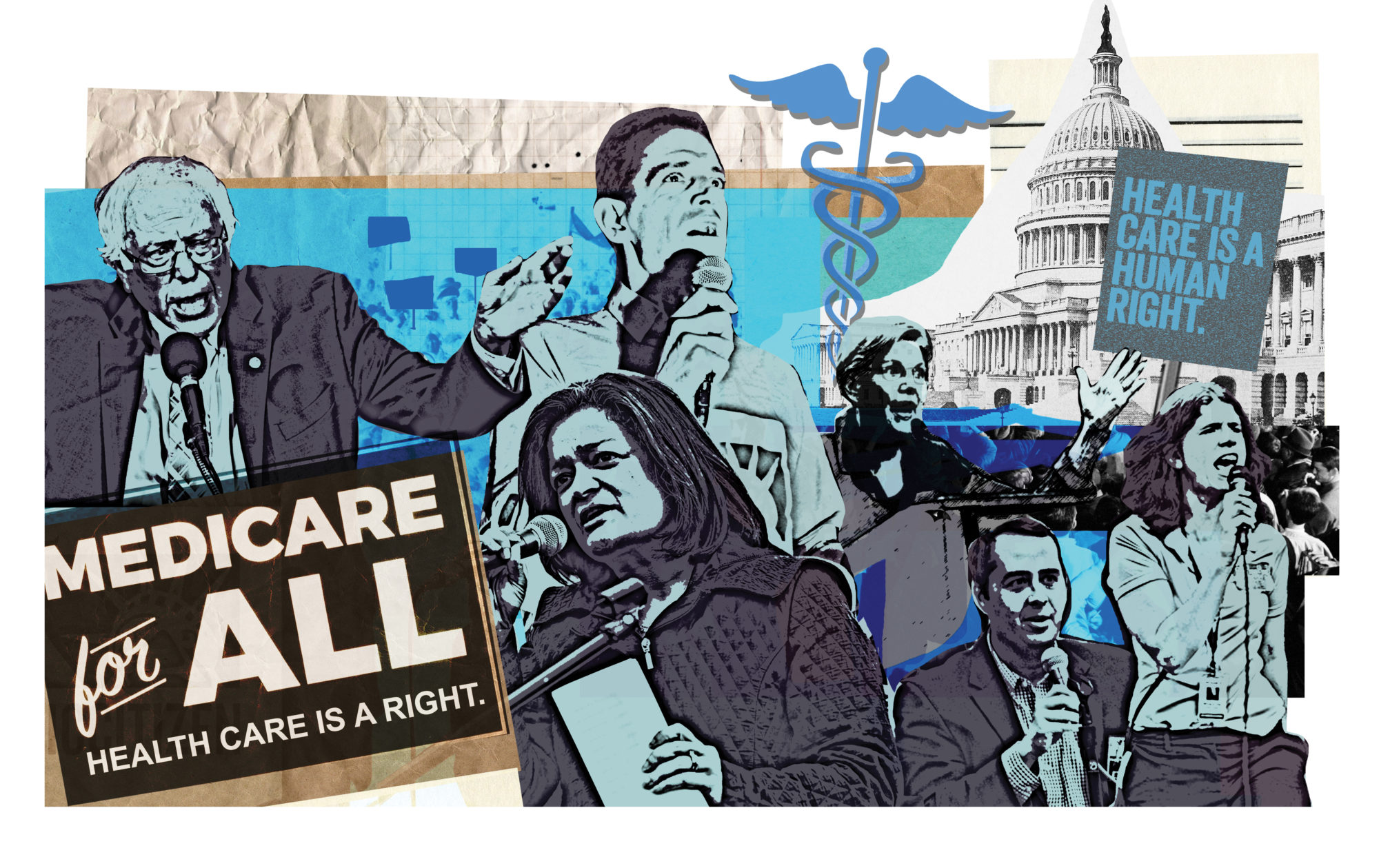FACT CHECK: Medicare for All Would Save the U.S. Trillions; Public Option Would Leave Millions Uninsured, Not Garner Savings
Medicare for All Would Cover Everyone, Save Money and End Medical Debt

Medicare for All opponents repeatedly claim that Medicare for All is “too expensive” by presenting misleading numbers without the proper context of our unsustainable health care spending. Here are the facts:
We can’t afford NOT to implement Medicare for All.
- Our health care spending is estimated to continue rising and will reach nearly $6 trillion a year by 2027. That means according to the federal government, we will spend around $42.9 trillion on health care over the next decade if we maintain the status quo.
Medicare for All will cost LESS than our current system.
- A recent study by Yale epidemiologists found that Medicare for All would save around 68,000 lives a year while reducing U.S. health care spending by around 13%, or $450 billion a year.
- Medicare for All spending would be approximately $37.8 trillion between 2017 and 2026, according to a study by the Political Economy Research Institute (PERI) at the University of Massachusetts Amherst. That amounts to about $5 trillion in savings over that time. These savings would come from reducing administrative costs and allowing the government to negotiate prescription drug prices.
- Other studies by think tanks and government agencies have analyzed single-payer proposals at the state and federal levels. Most found Medicare for All would reduce our total health care spending.
- Even a study by the Koch-funded Mercatus Center found that Medicare for All would save around $2 trillion over a 10-year period.
With Medicare for All, most families would spend less on health care than they do now on premiums, copays and deductibles.
- Some additional taxes would be needed to pay for Medicare for All, but most Americans would spend less on health care than they do right now.
- Overall, working families that make around $60,000 a year would pay up to 14% lesson their annual health care costs.
As the debate grows on how to overhaul the health care system, Medicare for All is being pitted against a public option. It’s important to highlight the differences between the policies.
A public option would:
- Cost even more than the wasteful status quo, around $175 billion more per year. And because it wouldn’t have comparable savings from efficiencies and negotiating power, it would cost $600 billion a year more than Medicare for All without providing as generous coverage;
- Leave millions uninsured or underinsured and subject to unnecessary out-of-pocket costs, including copays and deductibles;
- Leave more than 100 million Americans at the whim of private for-profit insurance, so they would be under constant fear of disruption when their employer changes plans or they lose or change jobs;
- Force employers to continue to struggle with whether they can afford to provide insurance to their employees; and
- Enable for-profit insurers to cherry-pick healthier Americans, threatening the financial solvency of the public programs.
However, Medicare for All would:
- Provide guaranteed health care to everyone;
- Provide access to home and community-based care for all who need it;
- Guarantee coverage for dental, vision and hearing services;
- End medical debt and medical bankruptcies;
- Reduce administrative waste by $500 billion per year;
- End price gouging by pharmaceutical companies; and
- Put an end to corporations profiting off the sick.
For more than 45 years, Public Citizen has called for legislation that would guarantee health care for all. To speak with a Medicare for All policy expert, or if you have questions, please contact Mike Stankiewicz at mstankiewicz@citizen.org, or (202) 588-7779.